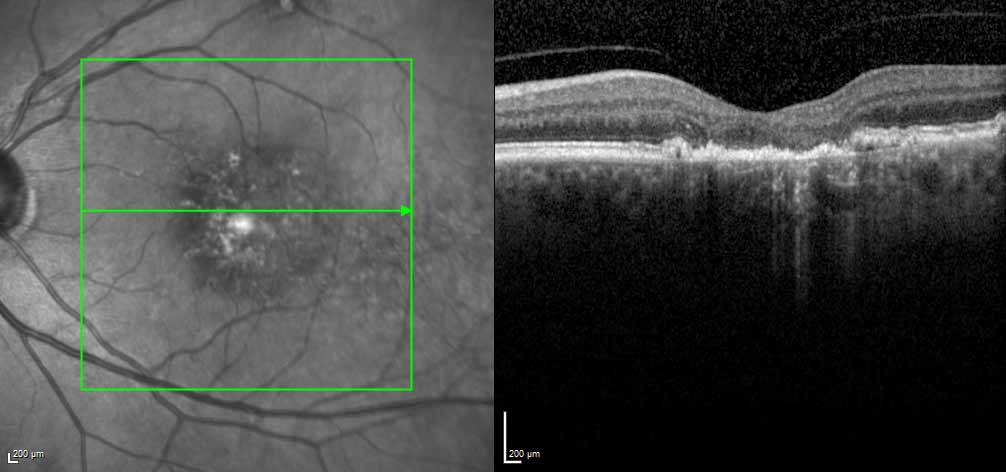 |
| Since macular atrophy progresses faster in dry AMD eyes, it’s possible that neovascularization may play a protective role in macular atrophy growth. Photo: Tanuj P. Banker, MD. Click images to enlarge. |
A new retrospective study evaluated 124 anti-VEGF-treated patients with wet AMD in one eye and dry AMD in the fellow eye. The researchers reported that the first detection of macular atrophy in wet AMD eyes without macular atrophy at baseline increased significantly between years two and six, compared with dry AMD eyes.
Significantly more wet AMD eyes (45%) developed macular atrophy during the study’s follow-up period, compared with 16.5% of dry AMD fellow eyes. Comparing both eyes’ macular atrophy progression in a synchronous paired manner over four years showed that wet AMD eyes had an average macular atrophy progression rate of 0.275mm/year compared with 0.11mm/year in the dry AMD fellow eye.
However, when they compared progression between the two eyes in an asynchronous manner, they found that when macular atrophy developed in dry AMD eyes, it progressed significantly faster than wet AMD eyes (0.295 mm/year in dry AMD vs. 0.176mm/year in wet AMD) with a significant time-eye interaction.
Prolonged anti-VEGF inhibition may be one local factor accounting for asymmetry between patient eyes, but the study wasn’t powered to answer this question. The researchers noted an absence of correlation between number of injections and macular atrophy in treated eyes. They also wrote that it’s possible wet AMD eyes were in a later disease stage, where asymmetry is usually more apparent.
Overall, the researchers concluded in their paper that treated wet AMD eyes demonstrate more macular atrophy compared with fellow dry AMD eyes. “This indicates that in patients that, for a certain time period, maintain asymmetry between their two eyes in regard to neovascularization presence, this asymmetry tends to exist for the atrophic component of their disease too, during this period." However, they added, when macular atrophy does appear in dry AMD eyes, “it has a significantly higher growth rate” compared to wet AMD eyes.
Blazaki S, Blavakis E, Chlouverakis G, et al. Evolution of macular atrophy in eyes with neovascular age-related macular degeneration compared to fellow non-neovascular eyes. Graefe’s Arch Clin Exp Ophthalmol 2023. [Epub August 11, 2023]. |

